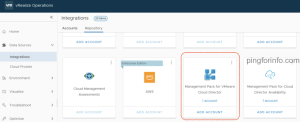
What Is Revenue Intelligence?
Revenue intelligence is a data-driven approach that companies use to understand and optimize their revenue streams. It leverages technology and advanced analytics to gain insights into customer behavior, market trends, and business performance, and uses these insights to inform strategic decision-making and drive revenue growth.
In the context of a SaaS application, revenue intelligence involves a deep dive into key performance indicators (KPIs) like customer acquisition cost (CAC), customer lifetime value (LTV), and monthly recurring revenue (MRR), among others. By analyzing these metrics in real-time, SaaS companies can identify opportunities for growth, mitigate risks, and ensure sustainable profitability.
Key Components of Revenue Intelligence for SaaS
To fully leverage revenue intelligence in a SaaS setting, several key components should be in place. These include data collection and analysis, customer lifecycle management, pricing strategy optimization, and churn rate analysis.
Data Collection and Analysis
Data is the lifeblood of revenue intelligence. The process starts with collecting vast amounts of data from various sources such as CRM systems, marketing automation platforms, and billing systems. This data is then cleaned, consolidated, and analyzed to identify patterns and trends.
Analysis of this data offers valuable insights into customer behavior, market dynamics, and business performance. These insights can be used to make informed decisions on how to allocate resources, prioritize efforts, and maximize revenue.
Customer Lifecycle Management
Revenue intelligence also involves managing the customer lifecycle effectively. This means tracking and analyzing customer interactions from the initial contact through to acquisition, retention, and eventual churn. By understanding the customer journey, SaaS companies can identify opportunities to upsell and cross-sell, improve customer satisfaction, and increase customer lifetime value.
Pricing Strategy Optimization
Pricing strategy is another critical component of revenue intelligence. SaaS companies need to continually evaluate and adjust their pricing models to align with market demand, competitive landscape, and customer willingness to pay.
By leveraging data on customer usage, perceived value, and price sensitivity, companies can optimize their pricing strategies to maximize revenue and profitability.
Churn Rate Analysis
Churn rate analysis is another crucial part of revenue intelligence. Churn rate, or the rate at which customers stop subscribing to a service, directly impacts a SaaS company’s bottom line. By analyzing churn rates and understanding the reasons behind customer attrition, companies can develop strategies to reduce churn and increase customer retention.
Understanding SaaS Revenue Streams
Revenue streams for SaaS companies are typically diverse and complex. They can include recurring revenue models, one-time purchases and add-ons, and ancillary revenue sources.
Recurring Revenue Models
Recurring revenue is the backbone of the SaaS business model. This involves customers paying a regular subscription fee for continuous access to a software service. Recurring revenue models provide a predictable and stable revenue stream, making it easier for SaaS companies to plan and forecast.
One-time Purchases and Add-ons
In addition to recurring revenue, SaaS companies often generate revenue from one-time purchases and add-ons. These can include premium features, additional storage, or professional services. While these revenue streams may not be as predictable as recurring revenue, they can significantly boost a company’s overall revenue and profitability.
Ancillary Revenue Sources
Ancillary revenue sources are additional ways SaaS companies can generate revenue. These can include partnerships, affiliate marketing, and advertising. While ancillary revenue sources may not constitute a significant portion of a company’s revenue, they can contribute to overall revenue growth and diversification.
Best Practices in Revenue Intelligence for SaaS Applications
Emphasize Data-Driven Decision Making
Data is the backbone of any successful SaaS business. It helps you understand your customers, their behavior, their needs, and their preferences. By emphasizing data-driven decision making, you can ensure that your strategies and decisions are based on concrete, factual information rather than assumptions or gut feelings.
Data-driven decision making allows you to evaluate your performance accurately, identify areas of improvement, and make informed decisions that can significantly boost your revenue. Furthermore, it helps you stay agile and adaptable in the face of changing market conditions and customer preferences.
The key to successful data-driven decision making lies in the quality of your data. It’s essential to ensure that your data is accurate, reliable, and up-to-date. In addition, you should also have the right tools and systems in place to collect, analyze, and interpret your data effectively.
Utilize Advanced Analytics and AI
Advanced analytics and Artificial Intelligence (AI) are powerful tools that can significantly enhance your revenue intelligence. They can help you gain deeper insights into your data, identify trends and patterns, predict future outcomes, and make smarter, more informed decisions.
Advanced analytics can help you analyze your data from multiple angles and uncover insights that might not be apparent through traditional analysis methods. For example, you can use advanced analytics to identify which features of your SaaS application are most popular with your customers, which marketing channels are driving the most revenue, or which customer segments are most profitable.
AI can automate and streamline many aspects of your revenue intelligence. For instance, AI can automate the process of data collection and analysis, provide real-time insights, or predict future revenue trends based on historical data.
Personalized Customer Engagement
In today’s digital age, customers expect personalized experiences. They want businesses to understand their individual needs and preferences and provide them with relevant, personalized solutions. This is particularly true in the SaaS industry, where customer engagement plays a crucial role in revenue generation.
Personalized customer engagement can significantly enhance your revenue intelligence. It can help you understand your customers better, build stronger relationships with them, and ultimately drive more revenue. For instance, by personalizing your communication with your customers, you can make them feel valued and appreciated, which can boost their loyalty and increase their lifetime value.
Additionally, personalized customer engagement can also help you identify upsell and cross-sell opportunities. By understanding your customers’ needs and preferences, you can recommend additional products or services that they might find valuable, thereby increasing your revenue.
Dynamic Pricing Strategies
Pricing plays a key role in revenue generation. However, in the SaaS industry, setting the right price can be quite challenging. This is where dynamic pricing strategies come into play.
Dynamic pricing is a strategy that involves adjusting your prices based on various factors such as market demand, customer behavior, or competitive landscape. By implementing dynamic pricing, you can ensure that your prices are always optimized for maximum revenue generation.
For instance, you can use dynamic pricing to offer discounts during off-peak times or to charge premium prices during peak times. Similarly, you can use dynamic pricing to offer personalized pricing based on a customer’s usage, behavior, or value to your business.
Customer Success Focus
Finally, having a customer success focus is crucial for revenue intelligence. After all, your customers are your most important asset, and their success is directly linked to your success.
Customer success involves ensuring that your customers achieve their desired outcomes while using your SaaS application. By focusing on customer success, you can enhance customer satisfaction, reduce churn, and increase customer lifetime value, all of which can significantly boost your revenue.
Having a customer success focus means proactively addressing your customers’ needs, providing them with ongoing support and guidance, and continuously improving your product based on their feedback. It also means celebrating their successes and turning them into advocates for your brand.
Conclusion
In conclusion, revenue intelligence for SaaS applications is a multifaceted approach that requires a combination of best practices. By emphasizing data-driven decision making, utilizing advanced analytics and AI, personalizing customer engagement, implementing dynamic pricing strategies, and focusing on customer success, you can significantly enhance your revenue intelligence and drive your SaaS business to new heights.
By Gilad David Maayan


